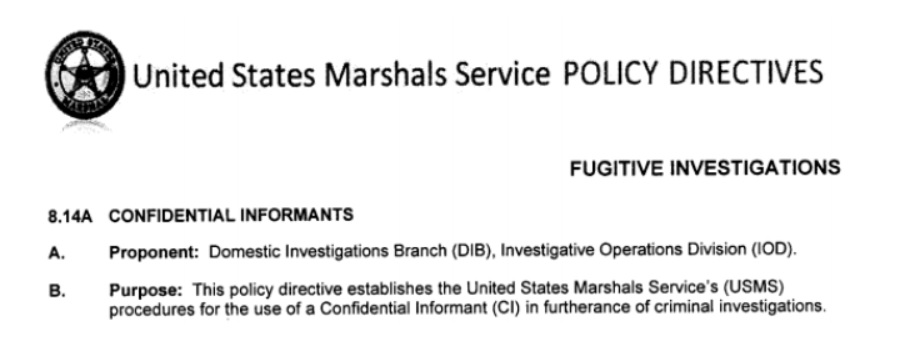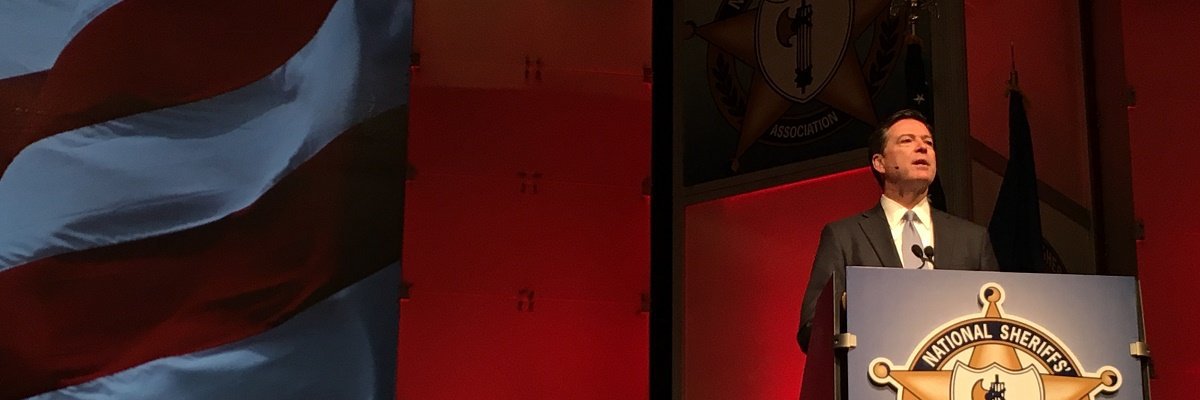In 2015, 34-year-old former soldier and Muslim convert Daniel Seth Franey befriended an FBI informant posing as a gunrunner. The informant gave the unemployed Franey money to pay his electric bill and hired him as his lookout as he made road trips to sell guns to undercover FBI agents. The FBI had “dug into Franey’s background” and knew he had previously been subjected to debt collections and was in need of money. It was also aware of a three-year-old protective order from a domestic violence case against Franey which barred him from possessing a firearm.
Franey had obeyed the court order until the FBI informant showed up and handed him some guns to shoot. He was arrested and charged with illegally possessing a machine gun. In July 2016, he pled guilty to the single charge and faced ten years in prison.

Daniel Franey’s case is part of a larger trend of law enforcement agencies using confidential informants to manufacture crimes which otherwise may not have taken place. The FBI is typically at the forefront of such cases, even using confidential informants to lure underage and mentally ill Muslims into initiating terrorist plots. According to George Washington University’s Program on Extremism, of the 104 Islamic State-related arrests in the past four years, at least 58 are the result of “the use of confidential informants or undercover stings.”
But the use of confidential informants by the FBI goes far beyond manufacturing criminal plots. In recent years, the FBI has sought to infiltrate mosques and Muslim student associations to look for young Yemenis to serve as informants. During the Keystone XL protests, it breached Department of Justice (DOJ) rules requiring prior approval before the agency can cultivate informants. At least one former informant has said that FBI agents asked him to have sex with Muslim women in order to gather “pillow-talk intelligence.” According to official records, the agency also authorized its informants to break the law 22,800 times over a four year period.

One of the photos from Standing Rock that appear to have been taken by a confidential informant
Nor is the FBI the only agency involved in such questionable practices involving confidential informants. A 60 Minutes segment in 2016 looked at the Drug Enforcement Agency’s (DEA) use of young people arrested for possessing marijuana and Ecstasy as confidential informants. These informants are used to arrest others for drug charges or to testify against others in exchange for money or reduced sentences. According to a report by the DOJ Inspector General, the DEA paid its informants tens of millions of dollars even after one of them lied in court.
Meanwhile U.S. Customs and Border Protection (CBP) engages in “systematic targeting of travelers” for “lengthy interrogations” in order to find passengers who may be “useful to the government.” The system amounts to “an informal watchlist of people who have caught the FBI’s attention” and may be recruited as informants.
Given the plethora of issues which plague confidential informant programs, it is no surprise that government agencies in charge of these programs are not too keen on releasing the rules and procedures which govern their use of confidential informants. Only the FBI—which has been subjected to harsh criticism for its use confidential informants — makes its guidelines public. Other agencies, which have not faced the same level of criticism, are hesitant to follow suit.
FOIA requests filed eight months ago with various federal agencies for “guidelines and policies” for the use of confidential informants returned only one completed response: from the United States Marshals.

The Secret Service has yet to respond to the request and the Bureau of Alcohol, Tobacco, Firearms and Explosives has not even acknowledged the request.
All other agencies — Immigration and Customs Enforcement (ICE), Coast Guard, CBP, and the DEA — rejected the requests.
The Coast Guard helpfully identified that the information is contained in the Coast Guard Investigative Service Manual before denying the request in full.

The DEA cited numerous FOIA and Privacy Act exemptions in its rejection letter.

The most interesting response came from ICE, which determined that it could “neither confirm nor deny the existence of responsive records on the individual(s) identified in your request.”

After an appeal not unreasonably insisting that no individuals were actually identified in the request, ICE was a bit more helpful and sent along a 142 page-long document with every page redacted.
Given the undercover nature of the work carried out by confidential informants, a degree of secrecy is certainly understandable. There seems no reason, however, to maintain complete secrecy regarding the rules and guidelines which govern the use of confidential informants and spell out exactly what is and is not permissible for the agencies which employ these informants and for the informants themselves.
As recent protests against law enforcement excesses and for criminal justice reforms have shown, these agencies have been consistently resistant to reform measures and public pressure is often the only way to hold them to account. The unusually large numbers of scandals which are a recurring feature of cases involving confidential informants call for exactly such public pressure. The lack of transparency, however, makes any accountability impossible.
Read the USMS’ full response embedded below, or on the request page:
Image via FBI Flickr




